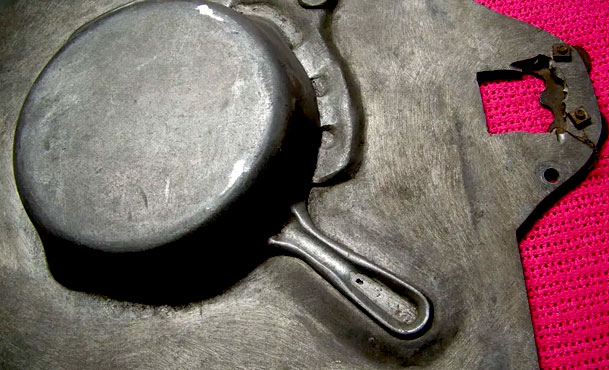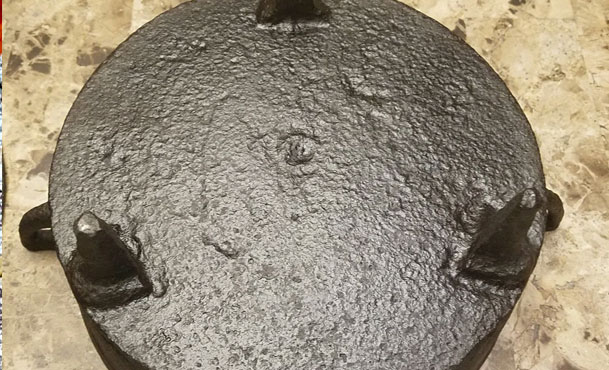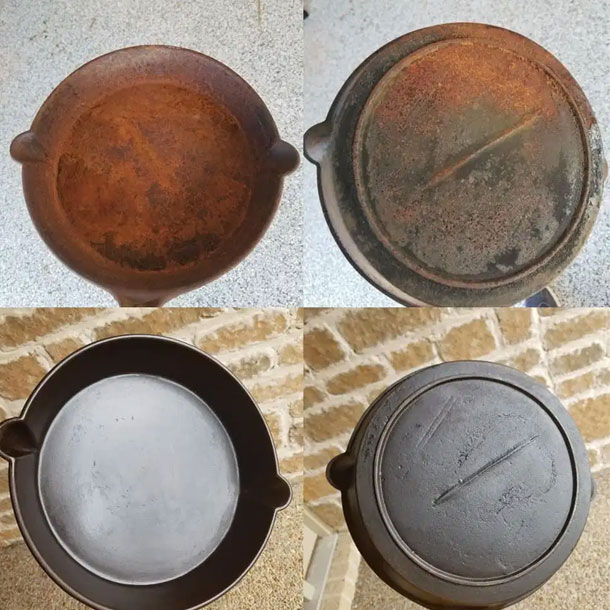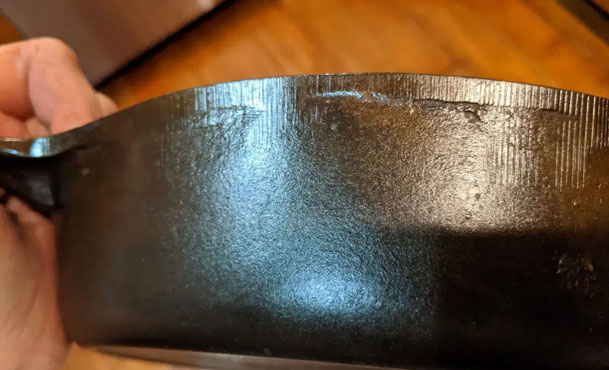
One of the benefits of owning antique cast ironware is the age, weight, and glass smooth cooking surface. The design of antique cast iron is very unique as well. Sadly, antique cast iron has been placed on the back burner because of markings that seem less than desirable, compared to named brand cast iron retailers like Griswold, Wagner, Lodge, etc.
Antique cast iron has unique markings in its outer features. The unique markings determine the "roundabout" age. Most antique cast iron can not be identified because record-keeping back then was not sufficiently detailed.
For those who have suspensions in owning an antique cast iron, it's only natural for one to know how old their cast iron may be.
Round gate markings possibly started before the 1700's, up until the 1800's.

When the pouring technique changed, the gate mark feature changed as well. The gate mark was dubbed as a bottom gate mark.
This technique possibly started during the 1800's and lasted up until 1930. Some pieces were not successfully sanded down in factories, causing a wobble.

Side gating possibly started in the 1880s, until now. Technically, each cast iron pan has a side gate mark. The molded pieces are sanded down, and not quite as visible as some of the older cast iron pieces seen in the 1880's to early 1900's.


Cast iron collectors have researched antique cast iron ware for years to solve manufactures of unidentified antique cast iron. Due to the lack of bookkeeping, this has made it very impossible to solve unidentified cast iron. Cast-iron plant fires could be a major reason why there are so many unanswered questions. However, the details that are found in antique cast iron have provided some help in cast iron identification. This is another reason why cast iron should never be thrown away, but well preserved because it only takes one cast iron to unlock several unanswered questions.
